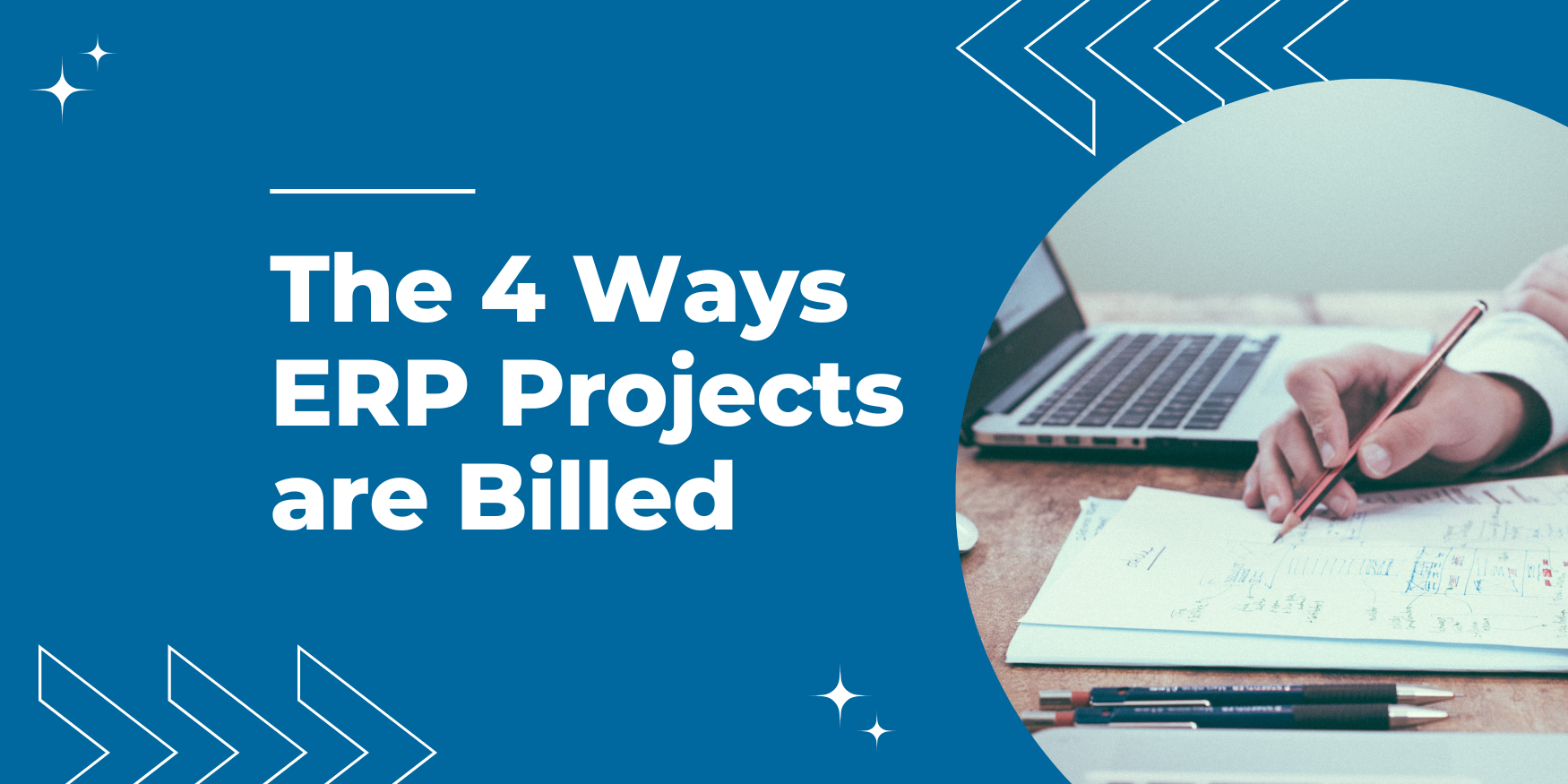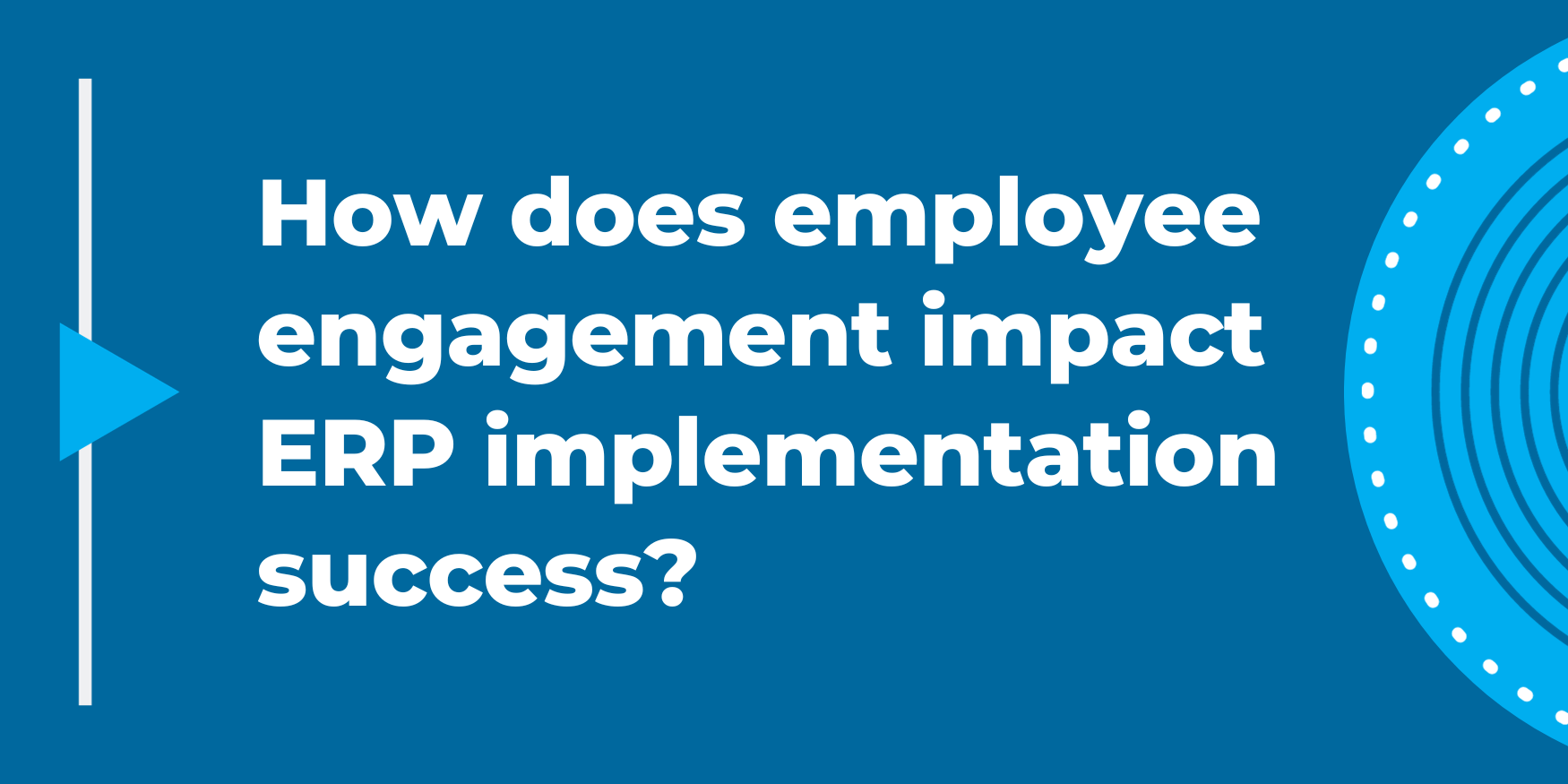How does employee engagement impact ERP implementation success?
Introduction For ERP (Enterprise Resource Planning) projects, employee engagement is critical for successful implementation and ongoing operation....

In today's rapidly evolving business landscape, project management is a critical element of success. As companies continue to adapt and innovate, new project management models have emerged to cater to diverse needs. Among these, fixed fee projects, time and material projects, cost-reimbursable projects, and subscription-based projects have gained prominence as viable approaches to project execution.
This comprehensive blog post delves into the intricacies of these methodologies, examining their benefits, challenges, and impacts on modern project management success.
Fixed fee projects are deeply rooted in the traditional project management approach and are all about certainty. In this method, the client and the service provider agree upon a predetermined sum for the project's entirety, irrespective of the actual resources or time required for its completion. This model provides a sense of predictability for both parties, as the costs are fixed upfront. In order for this model to be successful, scope, timeline, and resource requirements must be well defined from the onset. Historically, this has been one of the most preferred approaches from a client’s perspective for most projects.
One of the main benefits of fixed fee projects is a predictable budget. Clients can accurately budget for the project without worrying about unexpected expenses.
Another is project clarity. As mentioned above, scope, deliverables, and timeline are well-defined from the outset, reducing potential misunderstandings. Fixed fee projects encourage providers to work efficiently since the project price doesn't increase with time spent. In this model, the service provider assumes the majority of the risk with respect to timelines and budget constraints.
Even though these projects are typically preferred by clients, fixed fee projects do come with risks. The first is limited flexibility. If the project's scope changes during execution, it can lead to scope creep, cost overruns, and dissatisfaction. Often times, service providers will require the dreaded “change order” to add any functionality or service that was not specifically called out in the agreed upon scope of work. Change management from fixed fee project models tends to be cumbersome and time consuming. As an increasing number of service providers move away from traditional, waterfall style project management methodologies in favor of more agile approaches, the idea of rigid change management becomes antithetical to that effort.
Another risk to fixed fee projects is the potential for quality to be sacrificed. To meet fixed deadlines and budgets, the service provider may compromise on quality, affecting the end result. The service provider may be tempted to rush the project or provide the bare minimum of resources in order to maximize the profit margin, potentially compromising the quality of the final deliverable.
Time and material projects offer a more flexible approach than fixed fee projects. Here, the client pays for the actual time spent and the resources utilized for the project. This model allows for adjustments to the scope and deliverables as the project progresses, providing room for adaptation to changing requirements. This project management methodology is quite common in sectors like consulting, software development, and IT services.
One of the benefits of time and material projects is adaptability. The client can refine project requirements as they gain more insights, accommodating market changes and emerging opportunities. As client requirements change, the service provider can easily adapt without worrying about the initial fixed price. Another is the transparency that time and material projects offer. Provided that detailed breakdowns of time and resource usage are provided regularly to the client, a relationship of trust and transparency between the client and the service provider can be fostered. With clear records of time and resources used, clients can see exactly where their money is going.
As with fixed fee projects, time and material projects come with their own set of risks. Chief among them is the risk of cost overruns. Since the final cost is variable, budgeting can be challenging for clients. Without the benefit of fixed, mutually agreed upon pricing, clients may experience these cost overruns if the project takes longer than expected or if additional resources are brought to bear to meet any agreed upon schedule. Often times, project schedule slippages will occur which can cause additional pain to the client by delaying the desired functionality or end product that they were seeking to begin with. If there's no strict deadline, projects can lag, especially if the service provider benefits from the additional time billed. In order for time and material projects to be successful to both the client and service provider, project management must diligently report on the budget and timeline statuses.
With this type of project model, payments, or cost reimbursements, are paid to a service provider for all legitimate costs incurred for completed work plus a fixed fee that represents profit. This type of project model is usually used if a client desires a fixed fee contract, but the scope of work is expected to change throughout the lifecycle of a project.
Often times, the costs that are reimbursable are based on materials, licenses, permitting, and subcontracted labor costs. After costs, the service provider would charge a fixed fee for the services provided. This fee does not change during the lifecycle of the project unless the project scope changes. The fee itself can represent a standard fixed fee, an incentive fee, or an award fee. An incentive fee would be based on the service provider achieving certain performance objectives that are predetermined in the scope of work. An award fee would be based on satisfaction of certain broad subjective performance criteria that would also be defined in the scope of work.
One of the benefits to cost reimbursable projects is that they offer great flexibility for both the client and the service provider. As the project progresses and requirements evolve, the client can make changes without extensive contract modifications. The service provider can adapt to these changes without being locked into predefined deliverables. Since the client only pays for actual costs incurred, cost-reimbursable contracts often lead to a clearer definition of project scope. This clarity helps prevent disputes over deliverables and ensures that the client gets precisely what they need.
Additionally, the risks in a cost-reimbursable project are shared between the client and the service provider. The client may often bear the risk of project performance, while the service provider is compensated for actual costs and efforts. This encourages the service provider to manage costs efficiently and fosters a collaborative approach to both risk and project management.
Large and complex projects with uncertain or evolving requirements, extensive research and development components, or exploratory phases can benefit from the cost-reimbursable model. It allows for a gradual and adaptive approach to achieve the project's objectives.
Again, cost reimbursable projects are not without their risks. As with time and material projects, one of the significant risks is the potential for cost overruns. Since the service provider is reimbursed for actual costs, there may be less incentive to control expenses strictly. Without careful project management, the project costs can escalate beyond the initial estimates.
Another common risk with cost reimbursable projects is that with less rigid deliverables, there may be challenges in assessing the service provider’s performance objectively. The client needs to closely monitor the service provider’s progress and ensure that the project is on track to achieve the desired outcomes. As with any project, scope creep is still a risk with cost reimbursable projects.
Finally, disputes and trust issues with claimed costs can be a huge risk as well. If not managed transparently, cost-reimbursable projects can strain the client-service provider relationship. The client may question the legitimacy of certain costs, leading to disputes and a loss of trust between the parties involved.
Finally, we Introduce the newcomer to project and contract management……
In recent years, subscription-based projects have emerged as a forward-thinking and innovative approach to project management. Drawing inspiration from the success of subscription models in various industries, such as streaming services and software development, this project management model is changing the game.
Think of this methodology as a streaming television subscription, but for professional services. Clients subscribe to the services of a provider for a fixed recurring fee, either monthly or annually. The service provider delivers a continuous stream of value and support throughout the subscription period. Clients have the flexibility to adjust the scope, priorities, and deliverables as their needs evolve.
One of the key benefits to subscription-based projects is the fostering of an ongoing relationship between the client and the service provider. This leads to a better understanding and collaboration between both parties. With a continuous, long-term relationship, the service provider will be better positioned to understand the clients' needs from a much more personal perspective. This will lead to continuous improvement in service design, delivery, and customer satisfaction.
Another benefit is evolving solutions. Clients benefit from constant innovation and improvements as the provider seeks to deliver ongoing value. This in turn drives technological innovation as competing service providers will continue to improve their respective platforms and processes in order to attract more customers.
As with fixed fee projects, a subscription-based methodology delivers more predictable costs to the client. The subscription fees offer clear and predictable budgeting, helping clients manage expenses effectively. Subscription models also offer more scalability and service providers are able to cater to businesses of all sizes, from startups to enterprises, without overburdening resources. From a service provider perspective, subscription-based projects also provide a consistent and predictable revenue stream month over month and year over year. This stability allows for better long-term planning and growth. With multiple clients on the same subscription tier, the service provider can leverage economies of scale, reducing the per-client cost.
Subscription-based projects are not without their own risks. One of the key issues is the initial commitment. Clients may feel hesitant about committing to a subscription, particularly if they have not worked with the provider before. This can be mitigated with clear expectations that are spelled out in the scope or contract. A termination clause should be added to protect the client in the event the service provider fails to meet the stated milestones and timelines. Both parties will need to ensure that expectations and deliverables are well-defined to avoid any misunderstandings.
In the dynamic landscape of project management, various methodologies have emerged to address the diverse needs of businesses. Fixed fee projects, time and material projects, cost-reimbursable projects, and subscription-based projects each bring their own advantages and challenges.
Fixed fee projects offer predictability in budget and clarity in scope, yet face the risks of limited flexibility and potential quality compromises. Time and material projects prioritize adaptability and transparency, but can encounter challenges with cost overruns and project schedule slippages. Cost-reimbursable projects bridge the gap between fixed fee and time and material models, offering flexibility while sharing risks between clients and service providers. However, these models also carry the risk of escalating costs and assessing service provider performance objectively.
In recent years, subscription-based projects have risen as a transformative approach, drawing inspiration from subscription models in various industries. By fostering ongoing relationships and continuous value delivery, these projects enhance collaboration, innovation, and customer satisfaction. The subscription-based methodology offers predictable costs, scalability, and stable revenue streams, benefiting both clients and service providers. Nonetheless, this approach requires clear expectations and well-defined deliverables to mitigate risks associated with initial commitment and misunderstandings.
As businesses seek agile and effective project management strategies, understanding these diverse methodologies is crucial. Selecting the most appropriate approach depends on project specifics, client-provider dynamics, and risk tolerance. Whether rooted in tradition, embracing adaptability, or capitalizing on ongoing partnerships, these methodologies contribute to the ever-evolving landscape of successful project management.

Introduction For ERP (Enterprise Resource Planning) projects, employee engagement is critical for successful implementation and ongoing operation....

Subscription as a Service (SaaS) companies thrive on understanding and optimizing key performance indicators (KPIs). These metrics are insights that...
Understanding On-Premise and SaaS Solutions